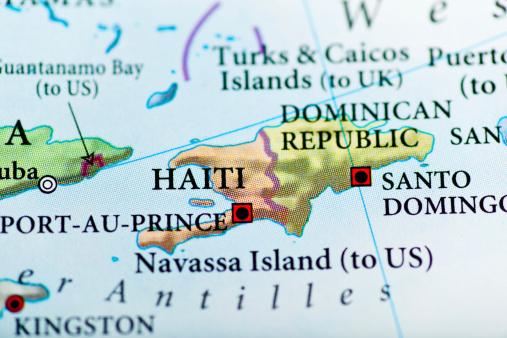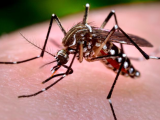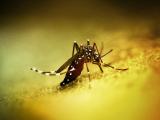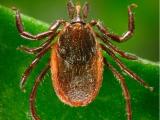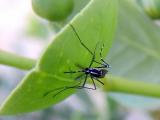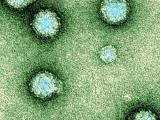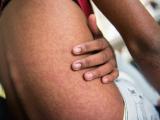The pace of chikungunya cases in some Caribbean outbreak hot spots continues and topped 135,000 last week, as US officials today announced three new imported cases.
Last week the Pan American Health Organization (PAHO) reported that most of the new cases were from the Latin regions of the Caribbean, with Guadeloupe, Martinique, and the French part of St. Martin all reporting new suspected and confirmed cases.
The number of chikungunya cases has risen to 135,427 suspected or confirmed cases, which is 28,003 higher than the 107,424 cases reported the previous week, according to a Jun 6 PAHO report. The number of deaths from the disease held steady at 14.
Almost two thirds of the new cases involve suspected infections from the Dominican Republic and Haiti. The number of illnesses in the Dominican Republic climbed by 14,337, to 52,976 last week, while the number in neighboring Haiti climbed by 5,490, to 11,802.
The European Centre for Disease Prevention and Control (ECDC), which has been tracking the outbreak in the Caribbean since it began in the French side of St. Martin in December, reported similar numbers, though its totals for the Dominican Republic and Haiti were much lower than in PAHO's report.
The ECDC said there have been more than 100,000 suspected cases in the region and at least 14 deaths. It said an increasing number of cases have been reported from most of the affected areas.
In the non-Latin areas, more infections were reported in Guyana, where the number of confirmed cases rose from 2 to 16. Other jurisdictions, including St Lucia and Saint Vincent and the Grenadines, saw their totals grow slowly over the past 4 weeks.
Imported cases in US, elsewhere
PAHO also tabulated the number of imported cases for all countries in the region. So far six countries or territories have reported a total of 35 imported cases. Seven of the infections were reported last week, including the first two from Cuba. Other countries reporting cases are the United States (27), Panama (2), Chile (2), Aruba (1), and Barbados (1).
The US Centers for Disease Control and Prevention (CDC) said in an update last week that the number of imported cases is likely to rise, given ongoing outbreaks in the Caribbean. It added that case numbers doubled during the last 2 weeks of May, mostly in just five areas: the Dominican Republic, Martinique, Guadeloupe, Haiti, and the French side of St. Martin.
The CDC said in a Jun 4 update that the 27 imported US chikungunya cases reported so far this year had already equaled the average number reported in a typical year.
Since the CDC update, however, more states have reported infections in travelers. For example, the Nebraska Department of Health and Human Services (NDHHS) today reported chikungunya in a 25-year-old woman who had recently traveled to Haiti, where she was likely infected. She was hospitalized and released.
Joseph Acierno, MD, JD, chief medical officer and director of public health for the NDHHS, said in a statement that travel-linked chikungunya cases are still fairly uncommon, but health officials expect to see more in the years ahead. "Thankfully, deaths from the disease are rare, but the pain can be severe and debilitating."
Indiana health officials also reported an imported case today, in an Allen County resident who had recently traveled to the Caribbean, according to a press release from the Indiana State Department of Health (ISDH).
Jennifer Brown, DVM, state public health veterinarian, said in the ISDH statement, "We expected the epidemic in the Caribbean to cause some travel-related cases here in Indiana." State health officials urged the public to take precautions against mosquito-borne illnesses and said people who have high fever or joint pain after traveling to the Caribbean should visit their health provider and report their travel history.
Florida health officials also reported another imported case today in a person who had traveled to Haiti, according to a press release from the Orange County Health Department. It said the patient has fully recovered.
As of May 31 Florida had reported 18 such infections in 6 different counties, according to the most recent surveillance report from the Florida Department of Health (FDH). All of the patients had traveled to endemic countries or outbreak areas, most (12) from Haiti, but also from Dominica, the Dominican Republic, and Martinique.
The ECDC said in its update today that Trinidad, France, and Italy also reported imported cases in the past week.
Study plots travel from outbreak areas
In other developments, a Canadian research team found that the United States is the final destination for more than half of all air travelers departing Caribbean chikungunya outbreak areas, followed by France, which accounts for nearly 15%. The group reported its findings in the Jun 6 issue of Public Library of Science (PLoS) Currents: Outbreaks.
The researchers added that many North American travelers vacationing in the Caribbean will return to areas of the United States where the climate is suitable for local transmission. Mosquitoes that spread the disease—Aedes aeygpti and Aedes albopictus—are present across the southeastern region of the country. The top US destinations for travelers from Caribbean outbreak areas include New York City, Miami, and San Juan.
See also:
Jun 6 PAHO chikungunya update
Jun 9 ECDC communicable disease threat report
Jun 4 CDC update
Jun 9 NDHHS press release
Jun 9 ISDH press release
Jun 9 Orange County press release
May 31 FDH arbovirus surveillance report
Jun 6 PLoS Currents: Outbreaks study
